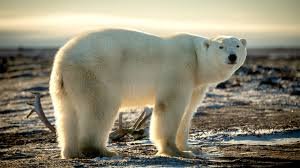Beasts in the Shadows: Animals in Gothic Literature
Image by Sara Crocoll Smith
Animals in Gothic literature are often unsettling presences. From Poe’s sinister black cat to the hounds of Baskerville, they frequently serve as omens, manifestations of supernatural forces, or extensions of human guilt and madness. Yet in Mademoiselle Frankenstein, my approach to animals is different—they are named, distinct, and innocent characters. Why do Gothic animals so often inspire fear, and why have I chosen to subvert that expectation in my work?
The Terror of Animals in Gothic Fiction
Gothic animals tend to be eerie because they occupy an ambiguous space between the natural and the unnatural. They are familiar yet unknowable. They can be intelligent but lack human morality. In many classic Gothic tales, they act as:
• Omens of Death or Misfortune – Think of the black cat in Poe’s The Black Cat, the raven in The Raven, or Dracula’s swarming wolves. These creatures don’t just exist; they symbolize doom.
• Manifestations of a Character’s Guilt or Madness – Gothic animals are rarely neutral. They often seem to watch, judge, or reflect a character’s darkness. Consider the vulture-like eye of the old man in The Tell-Tale Heart or the demonic hound haunting the Baskerville family.
• Unnatural Hybrids or Monsters – Gothic fiction loves creatures that defy categories, such as Dr. Moreau’s human-animal hybrids and Renfield’s disturbing obsession with consuming insects in Dracula. Animals that behave in ways they “shouldn’t” become unsettling, their very existence a violation of nature.
The Animals of Mademoiselle Frankenstein: Companions, Not Threats
In my retelling, I deliberately shift the role of animals. Instead of omens or monsters, they are named individuals—loyal, stubborn, pure, and evocative. They ground the story rather than haunt it. How?
• Animals Reflect Innocence and Trust – Océane Frankenstein is surrounded by chaos—war, death, and her unnatural creation. Her animals provide a contrast: they are true to their nature, without deception. Franklin the melancholy polar bear, Jack the recalcitrant cart horse, the seven North Pole sled dogs, Penny the calf, and Hobby the traveling circus elephant offer something pure in a dark and unpredictable world.
• They Offer Emotional Connection – While human characters in Gothic literature often struggle with trust and betrayal, the animals remain steadfast to themselves. Even when Jack refuses to cooperate or Franklin looms large, their presence is never malicious. They provide companionship in a story filled with loneliness and loss.
Subverting Gothic Expectations
By giving animals names and personalities, I challenge the idea that the Gothic world must be entirely bleak. In Mademoiselle Frankenstein, the true horrors come from human ambition, war, and grief—not from nature itself. The animals are not supernatural forces or omens but living beings with their purposes.
Do any memorable animals in Gothic fiction or film stand out to you? Do you find animals in literature more terrifying or more comforting? Share your thoughts in the comments!



